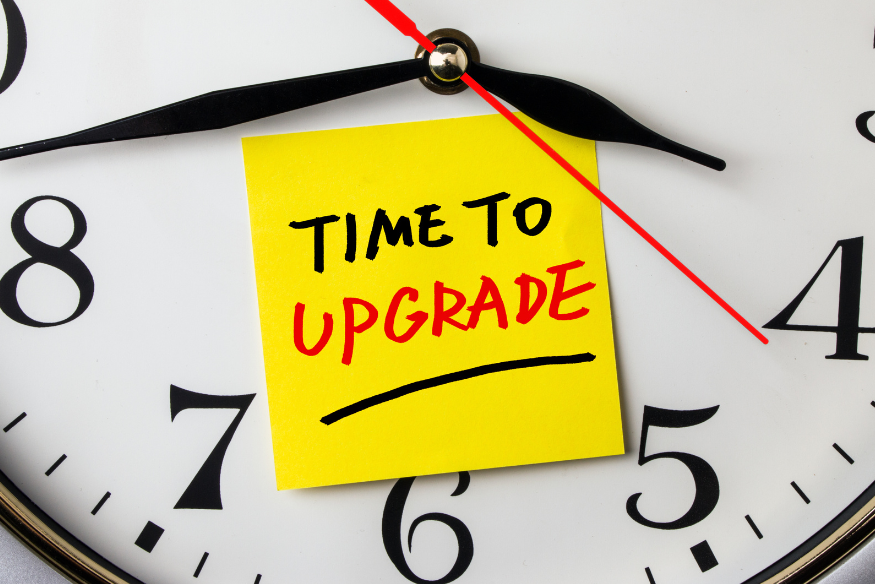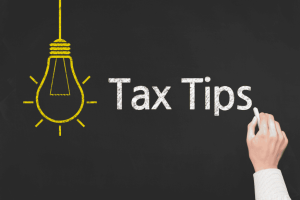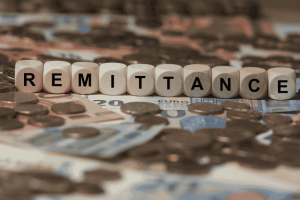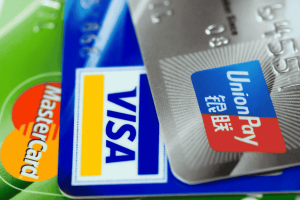Have you ever found yourself staring at your current credit card and wondering if it’s still the right fit for your lifestyle? Perhaps you’ve noticed friends flashing premium cards with exciting perks at restaurants, or maybe you’ve been receiving upgrade offers in your email. The decision to upgrade your credit card isn’t one to take lightly – it’s a financial choice that can significantly impact your spending habits, rewards potential, and overall financial health.
In today’s dynamic financial landscape, credit card issuers are constantly competing for your business with increasingly attractive rewards programs, sign-up bonuses, and exclusive benefits. But how do you know when it’s truly the right time to level up your plastic? Let’s dive into everything you need to know about credit card upgrades to help you make an informed decision that aligns with your financial goals.
Understanding Credit Card Tiers: What’s the Difference?

Before deciding whether to upgrade your credit card, it’s crucial to understand what sets different card tiers apart. Knowing these differences will help you choose the card that best matches your spending habits, lifestyle, and financial goals.
Entry-Level Cards
These are the most basic credit cards, typically designed for those just starting to build credit or who want a simple, cost-effective option.
- Annual Fees: Usually no annual fee or very low fees.
- Rewards: Simple cashback programs, typically offering 1-2% cashback on all purchases with no category bonuses.
- Benefits: Minimal perks such as basic purchase protection, if any.
- Credit Limits: Generally lower credit limits suitable for moderate spending.
- Interest Rates: Tend to have higher interest rates, so it’s important to avoid carrying a balance.
- Ideal For: Individuals seeking straightforward, low-cost credit without complex rewards.
Mid-Tier Cards
Stepping up, mid-tier cards cater to consumers with established credit who want enhanced rewards and perks without a high annual fee.
- Annual Fees: Moderate, usually between $95 and $150 per year.
- Rewards: Improved cashback or points, offering 2-3% back in select categories like groceries, dining, or gas.
- Additional Benefits: Travel protections such as trip cancellation insurance, purchase protection, and extended warranties.
- Welcome Bonuses: Modest sign-up bonuses, often with points or cashback after meeting spending thresholds in the first few months.
- Credit Limits & Interest Rates: Higher credit limits and slightly lower interest rates compared to entry-level cards.
- Ideal For: Occasional travelers and consumers who want better rewards and some travel perks without a big annual fee.
Premium Cards
At the top end of the spectrum, premium cards are tailored for consumers who want luxury, exclusivity, and are willing to pay a higher fee for exceptional benefits.
- Annual Fees: High, often ranging from $450 up to $700 or more annually.
- Rewards: Generous points or cashback programs—typically 3-5x points on multiple categories like travel, dining, and luxury purchases.
- Exclusive Benefits: Access to airport lounges, elite status with hotels and airlines, travel credits, premium travel insurance, concierge services, and statement credits for various expenses.
- Welcome Bonuses: Significant sign-up bonuses worth hundreds or even thousands of dollars in points or credits.
- Interest Rates & Credit Limits: Lower interest rates than lower-tier cards, but carrying a balance is never advisable. Credit limits are generally much higher.
- Value Proposition: On average, premium cardholders receive about $1,500 in benefits annually, which can often offset the higher annual fees.
- Ideal For: Frequent travelers, professionals, and those seeking luxury perks and personalized services.
Choosing the right credit card depends on your personal spending habits and which benefits you value most. Entry-level cards offer simplicity and low cost, mid-tier cards provide enhanced rewards and moderate perks, while premium cards deliver exclusive services and generous rewards for those willing to invest more. Understanding these differences is key to maximizing the value you get from your credit card.
6 Clear Signs It’s Time to Upgrade Your Credit Card
1. Your Spending Habits Have Evolved
Remember when you first got your current card? Your lifestyle and spending patterns have likely changed since then. If you’re now spending significantly more in certain categories like dining, travel, or groceries, upgrading to a card that offers enhanced rewards in these areas could be financially beneficial.
Example: If you’ve started traveling frequently for work or pleasure, upgrading from a basic 1% cashback card to a travel rewards card that offers 3x points on travel purchases could potentially earn you hundreds of dollars more in rewards annually.
2. You’re Not Maximizing Your Current Card’s Benefits
Take a moment to review your credit card statements from the past year. Are you actually using all the benefits your current card offers? If not, it might be time to switch to a card whose benefits better align with your lifestyle.
Ask yourself:
- Have I redeemed any rewards in the last six months?
- Am I regularly using the card’s primary benefits?
- Do I find myself wishing the card offered different perks?
If you answered “no” to the first two questions or “yes” to the third, an upgrade might be in order.
3. Your Credit Score Has Improved Significantly
When you first applied for your current card, your credit profile might have limited your options. If your credit score has improved substantially (say, from the 600s to the 740+ range), you now qualify for cards with better terms and more lucrative rewards.
| Credit Score Range | Typical Card Access |
| Below 580 | Secured cards, credit builder cards |
| 580-669 | Basic cashback cards, some with annual fees |
| 670-739 | Good rewards cards, moderate sign-up bonuses |
| 740+ | Premium cards, excellent sign-up bonuses, lowest APRs |
4. You’re Paying for Benefits You Don’t Use
Are you paying an annual fee for a card whose benefits you rarely utilize? This is a clear sign that your current card isn’t the right fit. Either downgrade to a no-annual-fee option or upgrade to a card whose benefits you’ll actually use enough to offset the fee.
Calculate this: If your card has a $95 annual fee but you only redeem about $50 worth of benefits each year, you’re effectively losing $45 annually.
5. You’re Hitting Your Credit Limit Regularly
If you consistently approach or reach your credit limit (even if you pay it off in full), it might be time to request a higher limit or upgrade to a card that offers one automatically. Premium cards typically come with higher credit limits, which can also benefit your credit utilization ratio – a key factor in your credit score.
6. You’re Ready for More Sophisticated Rewards
Basic cashback is straightforward, but as you become more financially savvy, you might be ready to explore more complex – and potentially more valuable – rewards systems like transferable points programs that can yield significantly higher value when used strategically.
The Financial Impact of Upgrading Your Credit Card
Upgrading your credit card isn’t just about getting access to fancier perks – it can have real financial implications that you should consider carefully.
Potential Benefits of Upgrading
- Higher Rewards Rate: Premium cards often offer 3-5% back in certain categories compared to the 1-2% on basic cards.
- Valuable Sign-up Bonuses: Some upgrade offers include welcome bonuses worth hundreds of dollars.
- Money-Saving Benefits: Premium cards may offer credits for services you already use, like food delivery, streaming services, or ride-sharing.
- Travel Insurance: Many higher-tier cards include trip cancellation, delay protection, and rental car coverage that could save you thousands in an emergency.
- Purchase Protection: Extended warranties and purchase protection can save you money when expensive items break or are stolen.
Potential Drawbacks to Consider
- Higher Annual Fees: Can you realistically extract enough value to offset a $450+ annual fee?
- Temptation to Overspend: The pressure to “maximize rewards” can lead to unnecessary spending.
- Complexity: More sophisticated rewards systems require more time and effort to manage effectively.
- Opportunity Cost: Would investing the annual fee amount yield better returns over time?
How to Evaluate if a Premium Credit Card Is Worth It for You
Thinking about upgrading to a premium card? Before making the leap, it’s smart to run a thorough cost-benefit analysis to determine whether the extra perks justify the higher annual fee. Here’s a step-by-step approach to help you decide:
Step 1: Calculate the Value You Currently Get from Your Card
Start by listing all the benefits you actually use with your current card. Assign realistic dollar amounts to each:
- Cashback or rewards points earned annually: Add up the total rewards you redeem or expect to redeem based on your spending habits.
- Statement credits: Include credits for things like travel, dining, or other perks you have used.
- Insurance benefits: Consider travel insurance, purchase protection, or rental car insurance you’ve claimed or anticipate using.
- Other perks: Think about lounge access, concierge services, or special discounts you’ve utilized.
Example:
- Annual cashback: $300
- Statement credits used: $0
- Insurance benefits claimed: $0
- Other perks: $0
Total current card value: $300
Step 2: Estimate the Value of the Potential New Card
Next, research the premium card’s features and estimate the dollar value of benefits you would realistically use:
- Projected rewards: Calculate expected cashback or points based on your typical spending patterns.
- Welcome bonus: Take the value of the sign-up bonus and divide it by the number of years you plan to keep the card.
- Statement credits: Estimate how much you will actually use (e.g., dining credits, travel credits).
- Additional benefits: Assign a value to benefits like lounge access, elite status, concierge, and insurance you expect to take advantage of.
Example:
- Rewards earned annually: $600
- Welcome bonus (spread over 3 years): $300 ÷ 3 = $100
- Dining credits: $100
- Ride-sharing credits: $120
- Other perks: $0
Total potential card value: $920
Step 3: Factor in the Annual Fees and Compare Net Benefits
Subtract the annual fee from the total value of each card to determine the net benefit:
| Card Type | Total Value | Annual Fee | Net Benefit (Value – Fee) |
|---|---|---|---|
| Current Card | $300 | $0 | $300 |
| Potential Upgrade | $920 | $250 | $670 |
Step 4: Make Your Decision
Compare the net benefits side by side. In this example, upgrading yields:
- Net benefit increase: $670 – $300 = $370 per year
If the incremental value of the new card significantly exceeds the additional cost, the premium card is likely worth it for you.
Final Tips
- Avoid carrying balances:
Even the best card won’t save money if you pay high interest charges. - Be realistic:
Only count benefits you will truly use. Don’t overestimate credits or perks that don’t fit your lifestyle. - Consider your spending habits:
Some cards reward specific categories, so align your choice with where you spend most. - Account for lifestyle changes:
If you travel more or dine out frequently, a premium card’s perks may become more valuable.
Upgrade vs. New Application: Which Path Should You Choose?
When considering a better credit card, you typically have two options: upgrading your existing card or applying for a new one entirely.
Benefits of Upgrading an Existing Card
- Preserves account history: Keeping your account age intact benefits your credit score
- No hard credit inquiry: Upgrades typically don’t require a new credit check
- Immediate approval: Less waiting and uncertainty
- Same account number: No need to update autopay settings
Benefits of a New Application
- Access to sign-up bonuses: Most upgrades don’t qualify for the lucrative welcome offers
- Keep your old card: Maintain your existing benefits while adding new ones
- More options: You’re not limited to the upgrade paths offered by your current issuer
- Potential for better approval odds: Some issuers prefer new customers
Pro tip: If you’re considering a new premium card but aren’t sure if it’s right for you, call the issuer and ask if they offer a “test drive” period where the annual fee is refunded if you decide to cancel within a certain timeframe.
Timing Your Credit Card Upgrade Strategically
When you decide to upgrade your credit card can be just as important as which card you choose. Upgrading at the right time can help you maximize rewards, avoid unnecessary fees, and maintain a healthy credit profile. Consider these key timing strategies before making your move:
Best Times to Upgrade
After a Significant Income Increase:
With higher income, your debt-to-income ratio improves, making you a stronger candidate for premium cards with higher credit limits and better terms.
Before Major Planned Expenses:
If you anticipate large purchases—like travel, home renovations, or holiday shopping—upgrade just before to take full advantage of welcome bonuses and category-specific rewards.
At the Start of Your Current Card’s Annual Fee Cycle:
Upgrading near the renewal date helps you avoid paying two annual fees in a short period, ensuring you get full value from each card’s yearly cost.
During Promotional Upgrade Offers:
Issuers sometimes roll out limited-time offers with enhanced bonuses or waived fees to encourage upgrades—keep an eye out for these opportunities.
After Holding Your Current Card for at Least One Year:
Many issuers require a minimum tenure before permitting an upgrade. Waiting also allows you to build a solid credit history with that card.
Times to Avoid Upgrading
- Before Applying for a Major Loan (Mortgage, Auto Loan):
Upgrading can trigger a hard credit inquiry or temporarily lower your average account age, potentially impacting your credit score. Keep your profile stable when seeking major financing. - When Carrying High Balances:
If you’re currently carrying debt, focus on paying it down before adding a card with a higher annual fee and potential temptation to spend more. - During Periods of Financial Uncertainty:
If your income or job situation is unstable, committing to a premium card with a high annual fee might not be wise. Prioritize financial stability first.
Pair your upgrade timing with your financial calendar—plan it around your budget cycles, tax refunds, or bonus payments to optimize your cash flow and rewards.
How to Approach Your Credit Card Issuer About an Upgrade
Ready to upgrade your credit card? Making the right approach can help you secure better terms, waive fees, and maximize benefits. Here’s a step-by-step guide to navigate this conversation smoothly:
Before You Call
- Review Your Account History:
Make sure you have a solid record of on-time payments and responsible usage. Issuers are more likely to approve upgrades for reliable customers.
- Check for Pre-Qualified Offers:
Log into your online account or check your email for any personalized upgrade invitations or pre-qualified offers from your issuer.
- Research Specific Cards:
Identify which card you want to upgrade to and understand its benefits thoroughly. This shows you’re informed and serious about the upgrade.
- Prepare Your Case:
Think about how your spending habits have evolved and be ready to explain why the upgrade fits your current financial lifestyle.
During the Conversation
- Be Direct but Polite:
Clearly state your interest in upgrading to a specific card. Confidence helps set a positive tone. - Highlight Your Loyalty:
Mention how long you’ve been a cardholder and your history of timely payments to build rapport. - Ask About Special Offers:
Inquire if there are any upgrade bonuses, waived fees, or other incentives available for loyal customers. - Negotiate the Annual Fee:
Some issuers may offer to waive the first year’s fee or reduce it as part of the upgrade deal—don’t hesitate to ask. - Get All Details in Writing:
Before agreeing, confirm all terms—annual fees, rewards structure, benefits, and any promotional offers—so there are no surprises.
Sample Conversation Starter
“Hi, I’ve been a cardholder for [X years] with an excellent payment history, and I’m interested in upgrading to your [specific card name] because my spending patterns have changed. Are there any special upgrade offers or incentives available for loyal customers like me?”
Common Mistakes to Avoid When Upgrading Credit Cards

Upgrading your credit card can unlock great benefits, but even the most knowledgeable consumers sometimes stumble. Avoid these common pitfalls to ensure your upgrade truly works for you:
1. Upgrading for the Wrong Reasons
Don’t let prestige or flashy card designs be your main motivation. Instead, focus on the real, tangible value the card offers—whether it’s rewards, perks, or savings that align with your lifestyle.
2. Not Reading the Fine Print
Premium cards often come with specific terms and conditions to qualify for benefits. Make sure you fully understand how to activate and redeem perks—like travel credits or insurance coverage—to avoid surprises or wasted value.
3. Overestimating Your Benefit Usage
Be honest with yourself about which perks you’ll actually use. For example, that exclusive airport lounge access might sound appealing, but if you only travel once a year, the cost may outweigh the benefits.
4. Ignoring the Impact on Your Credit Score
While upgrading usually doesn’t involve a hard inquiry, applying for multiple new cards in a short timeframe can impact your credit score. Monitor your credit health and avoid unnecessary applications close together.
5. Failing to Reassess Regularly
Your financial situation and spending habits evolve. What works today might not suit you in two years. Set a reminder to reevaluate your cards annually to make sure your current card still delivers the best value.
Conclusion: Is It Time for Your Credit Card Upgrade?

Deciding whether to upgrade your credit card is ultimately a personal decision that depends on your unique financial situation, spending habits, and priorities. The right time to level up isn’t when your friends do it or when you receive a flashy offer in the mail – it’s when the numbers clearly show that a different card would provide significantly more value based on your actual lifestyle.
Remember that the most prestigious card isn’t always the best card for you. The best credit card is the one that maximizes rewards for your specific spending patterns while providing benefits you’ll actually use.
Ready to explore your upgrade options? Start by logging into your current credit card account to check for personalized offers, or call your issuer’s customer service line to discuss potential upgrade paths tailored to your account history.









